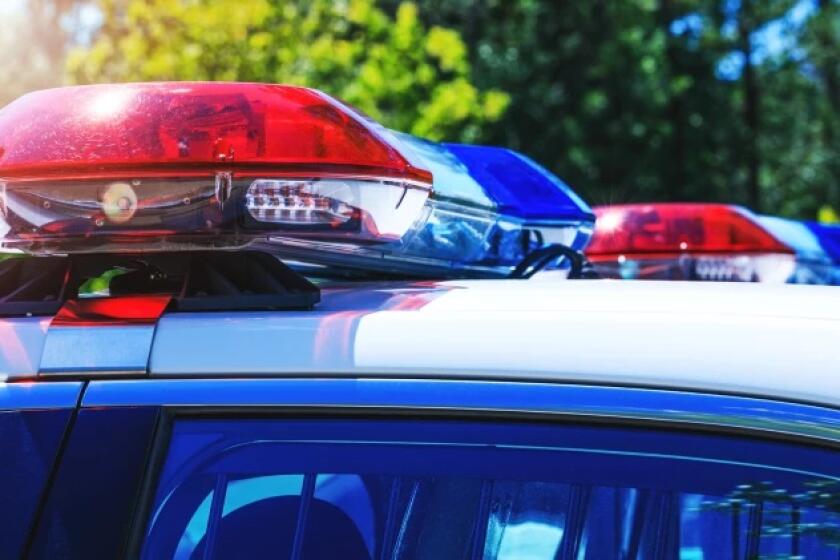In the center of nature
- Share via
Deep in the heart of Central Park is a little-known stand of redwoods
with massive branches providing plenty of shade in which to escape
the summer heat.
The small grove is a departure from its surrounding habitat,
mostly low-lying shrubs and California poppies.
“There was some debate about what we should do with the trees,
because they weren’t thought to be native plants,” Steve Ray of the
Shipley Nature Center said. “But we did a little research, and we
found at one time, there were redwoods in this area. Redwoods used to
cover Murdy Park.”
The shady stand marks one of about a dozen stops on the
interpretive trail at the newly reopened nature center. Left
abandoned for years, the center now tells a story of volunteerism and
precision, rejuvenated by dozens of residents who wanted to create an
authentic landscape detailing Orange County’s natural history.
Closed by the city in 2002, the center was officially reopened in
August and has been enjoying a flurry of activity in the interim.
More than 30 Boy Scouts have undertaken restoration efforts in the
hope of securing Eagle Scout badges, while labor unions of all trades
have donated time, labor and materials to bring the center back into
operation.
What now sits in the 18-acre space is an intricate trail system
wrapping around a small vernal pond and egret habitat, visited by
dozens of wild rabbits and squirrels, a few gopher snakes and the
occasional coyote. For many visitors, the park is a rare opportunity
to interact with nature and for others to stare up the trunk of a
giant redwood tree for the first time.
The Shipley Nature Center was first opened in 1974 by former City
Councilman Don Shipley as a nature reserve to anchor Central Park.
Facing development pressures, Shipley was said to have set aside
acreage in the “least desirable part of the park,” said Ray, while
the city developed the rest of Central Park, now the largest
municipal park in Southern California.
Shipley operated as a thriving natural center until the early
1990s when the city began to reduce its funding and assigned a lone
ranger to care for the facility.
“During that time, a lot of nonnative plants began to take root,”
Ray said. Most of the seeds were brought in by birds, animal
droppings or even the wind, Ray said, creating new thick foliage that
slowly choked out native species and required a lot more water.
Budget constraints prompted the city to close Shipley in 2002, but
just months later, a group of volunteers calling themselves the
Friends of Shipley Nature Center petitioned the City Council to lease
the facility and allow the nonprofit to restore and operate the
center.
The first Restoration Day was launched in November 2002, and
volunteers have come to the center since then on the first Saturday
of each month to pull weeds and plant native species. Ray estimates
that volunteers have hauled more than 350 tons off the site.
Dozens of unions have helped also. A plumbers union installed some
donated toilets and water lines on the site, while ironworkers and
stone layers built a cast-iron decorative fence to welcome visitors.
Dozens of other trade union members, from electricians to
tile-layers, also volunteered their time.
Recently, the Orange County Conservation Corps agreed to begin
performing field work at Shipley, and the county launched the Inside
the Outdoors program to educate local kids about nature. Future Eagle
Scout Nick Jarvis created the education areas for the outdoor
classrooms.
“It was pretty interesting getting this all together,” he said.
“We had some setbacks, but I’m happy with the way things are turning
out.”
Volunteers will continue working to restore the center, and they
hope to eventually plant an additional 50,000 plants on the site. To
raise money, Shipley officials plan to continue to sell native plants
and special “worm juice fertilizer,” Ray said. There’s also talk of
expanding the small building anchoring Shipley and constructing
several outdoor amphitheaters. And the center recently received a
$20,000 grant from the Municipal Water District
“That really says a lot to the volunteers who spend countless
hours out here,” Ray said. “It shows you that anything is possible.”
* DAVE BROOKS covers City Hall. He can be reached at (714)
966-4609 or by e-mail at o7dave.brooks@latimes.cof7o7mf7.
All the latest on Orange County from Orange County.
Get our free TimesOC newsletter.
You may occasionally receive promotional content from the Daily Pilot.









